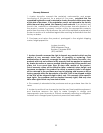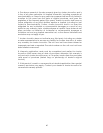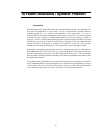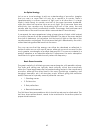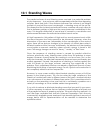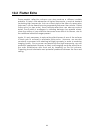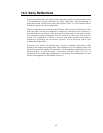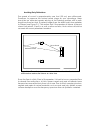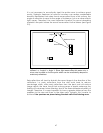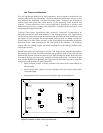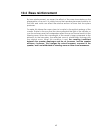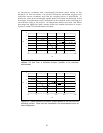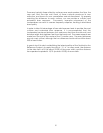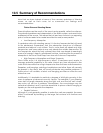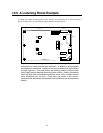
47
It is not necessary to acoustically treat the entire room to achieve good
results. Strategic treatment of specific locations can realize considerable
benefits. Remember that when sound waves reflect from a flat surface, the
angle of reflection is equal to the angle of incidence, just as a mirror reflects
light waves. Therefore, the most important location for sound absorbing
material is the point where the sound waves reflect to the listener (see Figure
9.2).
Early reflections will tend to diminish the sound stage in the direction of the
reflections, i.e. early reflections from the side walls tend to reduce
sound-stage width, while early reflections from the back wall will reduce
image depth. We have found that a strong sense of depth enhances the
feeling of involvement when listening, due to the three-dimensional solidity of
images. Therefore, it is more important to have a greater distance from the
speakers to the rear wall than to the sides walls. Typically, this is easier to
achieve if the speakers are placed along the short wall of the listening room.
Reflected Sound
Direct Sound
Angle X Angle Y
Figure 9.2 The sound is reflected at the same angle that it struck the
surface; i.e., Angle X = Angle Y. Since light waves obey this same rule, a
mirror can be used to find the point which can be acoustically damped to
avoid early reflections.



